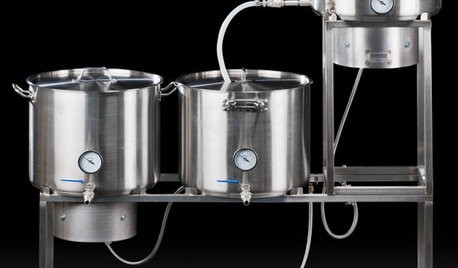Yeast = Sludge
Jasdip
8 years ago
Featured Answer
Sort by:Oldest
Comments (23)
plllog
8 years agochas045
8 years agoRelated Discussions
Milorganite organic fertilizer
Comments (25)Are you saying the Milorganite company has franchised outside of the city of Milwaukee? Milorganite is simply sewage sludge, or more properly the carcasses of the organisms that fed on the sewage sludge. The process was pioneered in the city of Milwaukee in 1926 (although testing began earlier) and the name simply means MIL-waukee-ORGAnic-NITrogEn It was billed as an organic, slow release source of nitrogen and in it's day was the superior choice since the only alternatives at the time were composts, blood meals and aluminum sulphate and all were more risky to apply to turf or contained lower amounts of nitrogen. To the best of my knowledge any product sold as milorganite comes from the Milwaukee treatment facility and nowhere else although Milwaukee is no longer the only city selling fried sewage sludge organisms. The material coming out of Milwaukee is completely safe to use on anything and contains nothing the EPA or anyone else believes harmful. One can eat the stuff and no symptoms will occur other than a potentially darkened stool. A fact sheet on the studies that have been conducted is available here for those who wish to make up their own minds based upon the research to date....See MoreFebruary 2010 What Have You Fed Your Compost Today?
Comments (32)The clippings from the first lawn mowing of the year The pruned-off dead bits from the eggplants and chilis that survived the winter Last year's dead tomato plants The "Black Beauty" eggplants I decided to rip out A whole bunch of oleander leaves Sawdust-based kitty litter A dead dove Anything raked up from where the tomato plants used to be In short, anything that will decompose goes into the compost, not the city trash bin....See MoreCookalong #1 --------------------- GINGER
Comments (2)I have to go to work...will try to work on this from there...or when I get home. Nancy...See Moreseptic tank & ?additives... good or bad?
Comments (8)@justalurker... Agree toilet or pipe obstruction, not septic tank problem. Concerned I may have taken the thread off-topic with my anecdote. Don't know plumbing layout but I have seen from the septic-tank side during pump-outs that there is a single inlet to the tank so, yes, there must be a "main" that they all feed into. @aliceinwonderland... Agree "continued use....as recommended..." is silly. The stuff isn't cheap either. Agree septic systems should and do work quite happily without it. Never talked to a plumber or pumper who recommended regular use of it like the mfgr's do. However, I have talked to several who did recommend it upon my description of my symptoms....which is where I got the idea. Each of these occasions were one-time events....See MoreJasdip
8 years agoJasdip
8 years agolast modified: 8 years agoannie1992
8 years agochas045
8 years agoJasdip
8 years agoannie1992
8 years agolindac92
8 years agoplllog
8 years agolast modified: 8 years agograinlady_ks
8 years agolindac92
8 years agoJasdip
8 years agolizbeth-gardener
8 years agoplllog
8 years agoshambo
8 years agolindac92
8 years agoJasdip
8 years agoci_lantro
8 years agoplllog
8 years ago
Related Stories

HOME TECHMake Home Sweet Home Even Sweeter With a Brewery Or Winery
New high-tech products make small-scale home beer and wine production easy and fun
Full Story




ghostlyvision